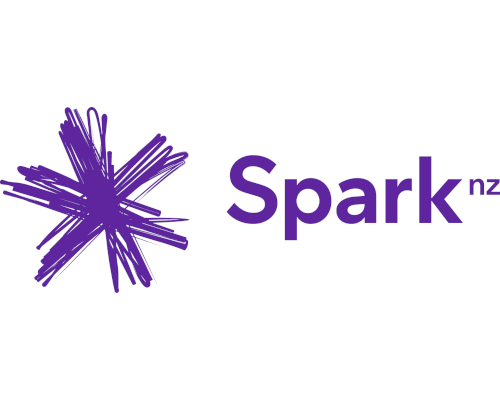Kiwi children are facing an upbringing dominated by technology – the struggle to find balance in today’s fast-paced environment is an ongoing challenge for New Zealand families.
To help families balance screen time and playtime, Spark has designed a tool that uses technology to encourage kids to get outside and play.
Play by Spark is a Bluetooth-enabled smart ball and app that helps families take charge of the amount of time they spend on screens and find the right balance for them. It tracks minutes of active play and balances this with screen use, sending an alert to the parents when screen time limits are met.
The product is currently a prototype, with a New Zealand trial to be conducted with local families later this month.
Although it’s not currently available to the public, Spark is asking Kiwis to register their interest in Play by Spark to understand what is important to them and help shape the development of this exciting project. Those that register will be the first to know when it is available.
With the aim of equipping parents with a new tool, Spark’s Brand Experience Tribe Lead Sarah Williams says Play by Spark hopes to create positive digital habits.
“Technology is part of everyday life and we want to help children grow up developing positive digital habits. At Spark, we’re working to equip parents with the right tools – like this smart rugby ball and app - so that technology is part of the solution, rather than the problem,” she says.
“We hope Play by Spark will help families manage screen time and engage in positive conversations around technology, screen time and active play.”
Spark has been working closely with leading New Zealand child psychologist, Dr Emma Woodward, who has nearly 25 years’ experience working with families and schools.
“Technology is not bad, it’s how we use it that might be corrosive,” says Dr Woodward. She believes Play by Spark will help Kiwi families teach their children important self-regulation skills from a young age and become more mindful about their technology use.
“It’s not about telling you how to parent, it’s about supporting you and introducing the idea of useful tech use, rather than mindless tech use such as social media scrolling or hours of streaming,” she adds.
Dr Woodward says devices don’t usually involve the social interaction our children need. “With non-tech play, you’re moving around, you’re exercising your body and improving co-ordination and balance. When you interact face-to-face, you’re using real-time communicative feedback that’s extremely important for developing good communication skills, which are fundamental to our wellbeing.”
Later this month, Play by Spark will be passed into the hands of several New Zealand families for a ten-week trial. The families will undergo a series of weekly challenges using the Play by Spark ball such as learning basic ball skills and simple rugby techniques. The challenges are designed for families to test Play by Spark in different active scenarios and monitor how it changes behaviour around screen time.
Getting active together means parents can model good healthy technology use themselves. “You can’t expect a child to do something that you’re not doing,” Dr Woodward says.
While the prototype is a rugby ball, Spark is looking into other toys and objects that the technology can be integrated into. This could be anything from a different type of ball to a wearable item.
Spark will be taking note of how Kiwis respond to Play by Spark, and future plans will be finalised once the results of the trial come in next year.
Get involved at www.spark.co.nz/play.
How Spark Play works
Teaming up with ball manufacturer, Gilbert, Spark has created a smart ball that monitors active play time when in use. Using a Bluetooth connection, the ball then syncs the collected data to a corresponding device that has the free Play by Spark app downloaded.
Play by Spark uses an accelerometer and a gyroscope as the main source of “information” about how it’s being used. The ball then translates the data into the app and allows the same amount of screen time as the amount of time spent playing with the ball. In simple terms, one minute of playtime is exchanged for one minute of screen time.
The ball is charged using a wireless charging dock and after one minute of all activities ceasing, the ball turns off automatically and enters a deep sleep mode.
What is the recommended screen time for children?
The World Health Organisation advises that children under two should not have any sedentary screen time, while those between two and four-years’-old should only have sixty minutes a day. This amount raises to two hours for over-fives.
However, more than 80% of children between five and nine-years’-old, and 90% of children between ten and fourteen-years’-old spend two or more hours a day looking at a screen.[1]
ENDS
(1) According to research conducted by the Ministry of Health



 Stats NZ: Retail Spending Flat In The September 2024 Quarter
Stats NZ: Retail Spending Flat In The September 2024 Quarter Antarctica New Zealand: International Team Launch Second Attempt To Drill Deep For Antarctic Climate Clues
Antarctica New Zealand: International Team Launch Second Attempt To Drill Deep For Antarctic Climate Clues Vegetables New Zealand: Asparagus Season In Full Flight: Get It While You Still Can
Vegetables New Zealand: Asparagus Season In Full Flight: Get It While You Still Can  Bill Bennett: Download Weekly - How would NZ telecoms cope with another cyclone
Bill Bennett: Download Weekly - How would NZ telecoms cope with another cyclone NZ On Air: Firm Audience Favourites Lead NZ On Air Non-Fiction Funding
NZ On Air: Firm Audience Favourites Lead NZ On Air Non-Fiction Funding Insurance and Financial Services Ombudsman: Woman Gets $40k More After Disputing Insurer’s Decision
Insurance and Financial Services Ombudsman: Woman Gets $40k More After Disputing Insurer’s Decision



